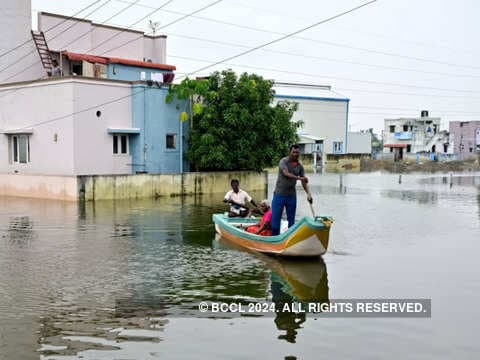But, is this really good news? Beyond the headlines, if you delve deeper into the forecasts, a worrying trend emerges. Amid ongoing impacts of climate change, scientists have been warning us that not all ‘above-normal’ or ‘normal’ monsoon seasons turn out to be good for the economy. The inter-seasonal and spatial variations of monsoon rains tend to have huge implications in terms of both agriculture and natural disasters.
Even this year, despite forecasts of ‘above-normal’ rainfall, most spells are expected to be short and intense rather than continuous and pleasant, and this could spell trouble for many flood-prone parts of the country.
Further, the season might witness deficient rains in Northeast India, while the monsoon ‘core zone’, including most of Central and South India will enjoy excesses. This change in fate from last year’s poor-performing monsoon has been widely attributed to El Niño’s departure and
India’s largely agrarian economy heavily relies on these rains. Over 70% of the country’s rainfall requirements are fulfilled by the southwest monsoon. So, forecasts of above-normal rains would usually bode well for us. Not only will the monsoonal rains replenish our drying reservoirs and aquifers, but they would also give our agricultural outputs and overall economy a facelift.
The monsoon has become an intrinsic factor in the calculations of the
It is thus possible that some regions might experience flooding while others suffer rainfall deficiencies. In other words, residents in parts of the country expecting above-normal rainfall will probably need more than just a sturdy umbrella this monsoon season.
Flooding and waterlogging is a huge problem in urban centres, but it can be just as damaging for the economy when they hit farmlands. According to Dr
Farmers are going to have to be very careful to ensure that the
Furthermore, intense rainfall activity has also been associated with more landslide risks in hilly areas. Loss of life and property damage is not uncommon in these scenarios – cue Himachal’s terrible landslides and flooding during the last rainy season. Local communities and governments must brace themselves for the worst as well.
And the cherry on top? Despite projections for all this rain, daytime temperatures are expected to remain above-normal in June. Northwest India, in particular, is likely to experience heatwave conditions for four to six days next month, compared to the normal of three days, Mohapatra said.
